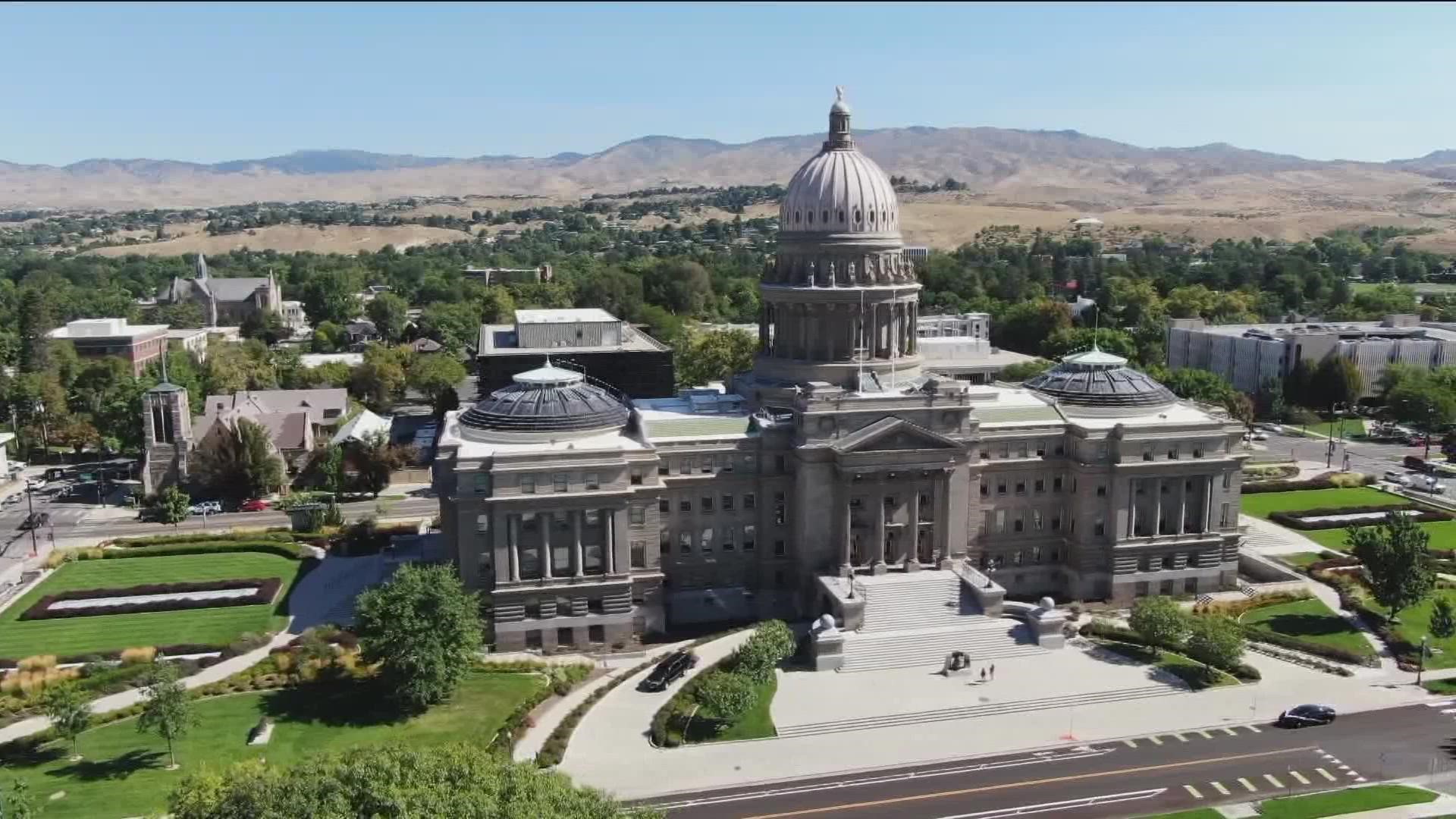BOISE, Idaho — This article originally appeared in the Idaho Press.
The New York Canal last breached in 1955, and the area below the six-mile stretch of the canal that runs through the Boise Bench “was mostly farmland and had a few houses,” said Brian Carter, project manager with the Boise Project Board of Control.
If a breach occurred today, it would be significantly more costly due to the highly urbanized landscape, and could cost people their lives, he said.
Carter shared his remarks during the governor’s water summit, a forum to discuss Idaho water trends, at the Capitol on Monday. Below are some of the highlights from the Treasure Valley portion of the summit.
NEW YORK CANAL IMPROVEMENTS
The Boise Project Board of Control is receiving grants and loans to shore up the six-mile section of the New York Canal that breached in 1955. The project is estimated to cost $50 million, according to a document from the Idaho Water Resources Board.
Not only would the project protect nearby residents, but it would also prevent the loss of irrigation water, Carter said. Though parts of the canal are lined, most of its sides and bottom are dirt. Over 29,000 acre-feet of water are lost by soaking through the canal’s bottom and sides in that stretch, according to results from both a 2022 study and a 1997 study of a 7.7-mile stretch of canal, six miles of which run through the Boise Bench. (A single acre-foot is about how much water is used by two to three households per year, according to reporting from ProPublica.)
“So, we feel by lining the six-mile section with a modern lining system to help prevent seepage, the conserved water will remain in the reservoir longer, making it easier to refill the (reservoirs), and benefiting fish and wildlife species in and around the reservoirs,” Carter said.
The canal also has a hydropower generating system, and lining more of the canal would allow more of water to move through for longer periods, he said.
The liner itself is made from polyester and steel-reinforced concrete, he said. With just the polyester components, the liner would have a lifespan of 50 years, but with the concrete, agency staff believe it would have a lifespan of 75-100 years, Carter said.
“It has been deemed virtually bulletproof,” he said.
The project will take about six years to install. Without the infusion of cash from the state, it would take approximately 50 years to complete, he said.
NEW MONITORING SYSTEMS ALLOW FOR BETTER WATER MANAGEMENT
Until recently, there was no way to monitor irrigation diversions from the Boise River in real time, said Mike Meyers, water master for Water District 63. Water managers could see updates about once per week, he said.
Now, new monitoring equipment allows district staff to see how much is being diverted on a near-daily basis, he said. The equipment collects data and sends it to district staff, who send it to the Idaho Department of Water Resources. Staff there can produce a report in as little as 15 minutes, he said.
Installing the equipment was made possible by funding from the Idaho Water Resources Board and the Bureau of Reclamation and should be wrapped up in a couple of weeks, he said.
Another undertaking by Meyers’ district is addressing trends in the water supply through the valley’s drain system. In addition to canals and laterals that were built for agricultural irrigation, the valley also has drains that were dug to take excess water from irrigated land and recycle it back into the Boise River, he said.
However, the amount of water coming back to the river through drains appears to be declining in certain areas, Meyers said. To better understand the drying of drains, the agency is planning to expand its monitoring system into drains, Meyers said. They hope that data will provide insight on the cause, such as poor management or a diminishing of the shallow aquifer, for example.
The data would also be linked to the state’s groundwater monitoring program and used to develop a management and mitigation plan, he said. Ultimately, the data and the plan would be shared publicly online, and could be shared with land use planners to help determine where subdivisions and other developments should be built, he said.
Overall, he said that the Treasure Valley’s water supply is relatively stable, and water managers here have the “luxury” of learning from the mistakes of areas of the state in more dire straits, such as the Eastern Snake River Plain.
This article originally appeared in the Idaho Press, read more on IdahoPress.com.
Watch more Local News:
See the latest news from around the Treasure Valley and the Gem State in our YouTube playlist:
HERE ARE MORE WAYS TO GET NEWS FROM KTVB:
Download the KTVB News Mobile App
Apple iOS: Click here to download
Google Play: Click here to download
Watch news reports for FREE on YouTube: KTVB YouTube channel
Stream Live for FREE on ROKU: Add the channel from the ROKU store or by searching 'KTVB'.
Stream Live for FREE on FIRE TV: Search ‘KTVB’ and click ‘Get’ to download.



